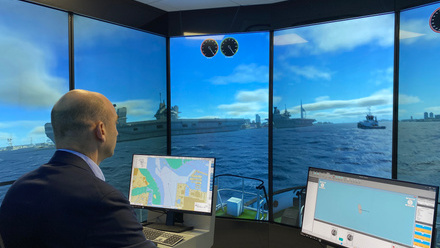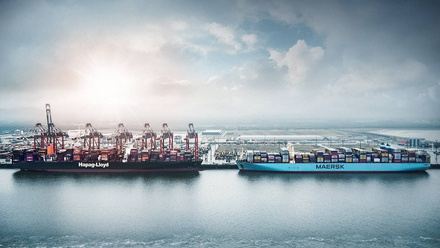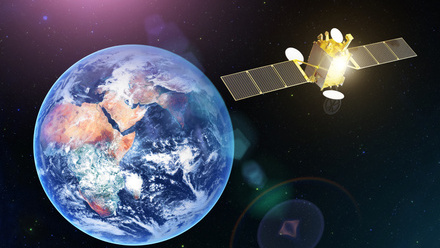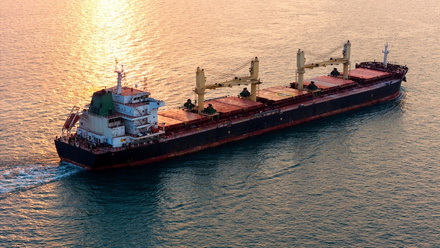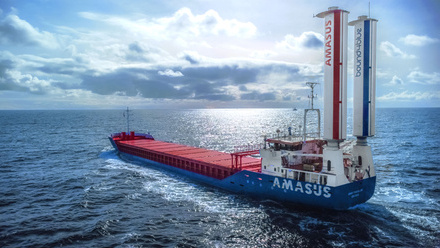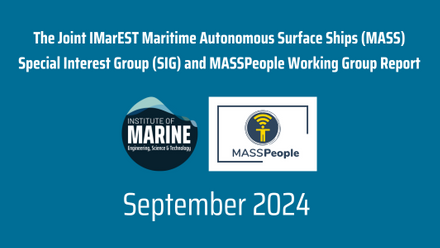The evolution of maritime autonomous surface ships
The sector stands at a pivotal moment with its technological advancements reshaping operations, safety, and efficiency.
“The benefits of maritime autonomous surface ships (MASS) extend far beyond simple automation,” says Gordon Meadow, CEO at SeaBot Maritime and IMarEST Fellow. “At their core, these systems represent a fundamental shift in how we approach maritime operations.”
Perhaps most significantly, the technology enhances safety by reducing human exposure to hazardous environments and situations. “We've seen this particularly in areas such as mine countermeasures and high-risk survey operations, where removing personnel from dangerous zones while maintaining operational capability has proven invaluable,” Meadow explains.
Another crucial advantage is cost efficiency. Meadow says that through optimised routing, improved fuel management, and by strengthening human machine teaming, operational costs will lower, and MASS can deliver significant economic benefits. “However, it's important to note that these types of savings often materialise over the longer term, after initial investment and integration phases.”
Environmental sustainability represents a third key benefit. MASS can operate with greater precision and efficiency, leading to reduced fuel consumption and lower emissions. “The ability to maintain optimal speeds and routes consistently, something human operators might find challenging over extended periods, contributes significantly to this environmental advantage,” Meadow says.
Regulatory, workforce and technical obstacles
However, Meadow adds that the implementation of MASS isn't without its hurdles: “One of the most pressing challenges lies in regulatory frameworks. While progress has been made, particularly through IMO initiatives and regional agreements like the North Sea MoU, we still lack comprehensive international standards for autonomous vessel operations. This regulatory uncertainty is impeding investment and driving slow adoption rates.
“Technical challenges persist as well. Ensuring reliable connectivity, cybersecurity, and system resilience in the harsh maritime environment remains crucial. The integration of AI decision-making systems with traditional maritime operations requires careful consideration, particularly in complex scenarios involving multiple vessels or unexpected situations.”
For Meadow, workforce transformation represents the most significant challenge. “While MASS creates new opportunities, it also requires substantial reskilling of the existing maritime workforce. The industry must balance the introduction of new technology with the preservation of crucial maritime knowledge and expertise.”
A year of progress
2024 has witnessed significant progress in MASS technology and implementation. There have been successful deployments of remote and autonomous systems in various applications, from port operations to offshore survey work. “The Black Sea conflict has accelerated the development and deployment of uncrewed surface vessels, demonstrating their tactical utility and resilience in challenging environments.”
Particularly noteworthy is the evolution of human-machine interfaces, with new systems focusing on intuitive operation and enhanced situational awareness. Meadow says that the development of advanced AI systems capable of better understanding and responding to complex maritime situations represents another significant step forward.
The question of accountability with this technology remains crucial to their wider adoption according to Meadow: “While these systems operate with increasing autonomy, ultimate responsibility must still rest with human operators and organisations. This requires clear chains of command and decision-making protocols.
“As such, we're moving toward a model of 'collaborative autonomy', where human oversight remains crucial even as autonomous capabilities expand. This approach ensures that while systems can operate independently, human judgment continues to guide critical decisions and maintain overall operational responsibility.”
As 2025 approaches, several trends appear likely to shape MASS development. Meadow says that an increased focus on standardisation is likely, both in terms of technical systems and operational protocols: “The industry should expect greater emphasis on interoperability, allowing systems from different manufacturers to work together seamlessly.
“I anticipate some accelerated development of regulatory frameworks, particularly as successful deployments demonstrate the technology's reliability. The role of remote operations centres will expand, creating new career opportunities for maritime professionals transitioning to shore-based roles.”
Most importantly, Meadow says 2025 should bring greater integration of new technology into mainstream maritime operations. “Rather than viewing autonomous systems as separate from traditional operations, or singularly remote or uncrewed, we'll also see increasing hybrid approaches where systems and crewed vessels work together effectively.
“The maritime industry's journey into autonomy continues to evolve, bringing both opportunities and challenges. Success in this transition requires careful attention to technology development, regulatory frameworks, and workforce adaptation.
“As we move forward, maintaining focus on practical implementation while ensuring safety and reliability will be crucial to realising its full potential.”
Join IMarEST’s Maritime Autonomous Surface Ships Special Interest Group.
Newsletter image: NavyX's USV MADFOX, in Portsmouth; credit: Shutterstock.
Tell us what you think about this article by joining the discussion on IMarEST Connect.

